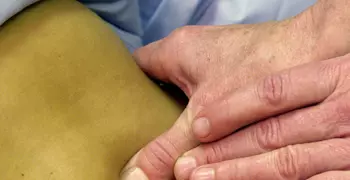Massage Therapy
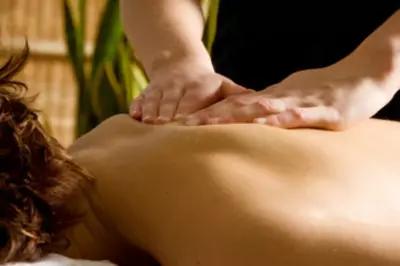
What Can I Expect in a First Massage Therapy Visit?
Most people receive massages in a place that is designated for massage. The environments vary, but the most common is a commercial setting, such as a spa, wellness center, or massage clinic. However, massage is becoming increasing common in other settings such as hospitals and rehabilitation clinics. On site chair massage is also offered in environments such as malls or airports, sporting events, or private parties.
This section describes a visit to a massage therapist in a private practice. The experience may be different in other environments.
Before the massage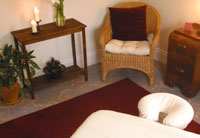
First of all, make sure it is a good time for you to have a massage. Reschedule your visit if have a fever, skin irritations (such as poison ivy or sunburn), or if you are trying to stabilize your medication (because massage can affect the dosage needed).
In the days before your massage, drink plenty of water.
Do not eat just before your massage.
Give yourself enough time to arrive on time and relaxed. If you are rushing and arrive stressed, it will take longer to get into a relaxed state.
Health History
 Generally, first appointments begin with an intake process, starting with a health history. The health history may be mailed out to you so you can complete it beforehand. If not, arrive early for your first visit to fill it out. Generally, a health history will ask about:
Generally, first appointments begin with an intake process, starting with a health history. The health history may be mailed out to you so you can complete it beforehand. If not, arrive early for your first visit to fill it out. Generally, a health history will ask about:
- Medical conditions
- Areas of concern
- Your level of pain or discomfort on good and bad days
- What helps reduce the pain and what makes it worse
- Contact information
You will also likely be asked to sign forms that explain your right to privacy such as HIPAA Consent and Disclosure.
Interview
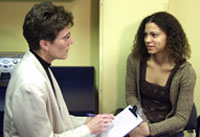 The massage therapist will review your health history and ask questions. Because massage can affect multiple body systems, such as the cardiovascular and nervous systems, be honest with the massage therapist about your health. You should also let the therapist know about any pharmaceutical drugs or botanical medicines you are taking, because massage can enhance or reduce the effect of pharmaceutical drugs, such as blood pressure medication. Knowing your history allows a therapist to determine if there are any reasons you should avoid massage or a particular technique.
The massage therapist will review your health history and ask questions. Because massage can affect multiple body systems, such as the cardiovascular and nervous systems, be honest with the massage therapist about your health. You should also let the therapist know about any pharmaceutical drugs or botanical medicines you are taking, because massage can enhance or reduce the effect of pharmaceutical drugs, such as blood pressure medication. Knowing your history allows a therapist to determine if there are any reasons you should avoid massage or a particular technique.
The massage therapist will ask you questions to better design a session that meets your needs and goals within the time allotted. Let the therapist know what areas of your body you would like worked on, if there are any areas to avoid, and if you have any techniques that you would like to use or avoid. If you are concerned about undressing, discuss it with the therapist, who should be able to offer you some options. Don't be afraid to discuss any apprehensions or concerns. All information you give is confidential.
The therapist will outline what will happen in the session and then leave the room so you can undress to your comfort level.
When you are ready, lie down on the massage table and cover yourself with the sheet or other draping on the table. The therapist will knock before re-entering.
During the massage
Generally, you will lie on a massage table, covered by a sheet or large towel. Make sure you are comfortable and let the therapist know if you are not. Tell the therapist if you are cold, want to be covered, don't want an area of your body touched, don't like the music, or are experiencing discomfort with the technique or how it is being applied. Remember, you are in charge, and can ask for changes or stop the session at any time.
Draping
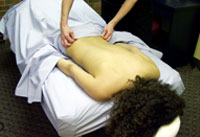 A professional massage therapist will never expose genitals or breasts, or any other areas you identify. Only the area the therapist is working on will be exposed.
A professional massage therapist will never expose genitals or breasts, or any other areas you identify. Only the area the therapist is working on will be exposed.
Music
The therapist may play music, but be sure to tell your therapist if you would prefer a different type of music or if you would like quiet. Typically, you can also bring your own music to play during the session.
How to get the most from your massage
Be as open to the process as you can.
Relax and try let your thoughts go. One way to do this is to focus on how the touch or technique feels.
Remember to breathe, as this helps you relax. Sometimes people hold their breath when a sensitive area is massaged, but it is best to breathe through it.
In the same way, tightening your muscles during the massage is counterproductive. If you can't seem to relax your muscles, let your massage therapist know. They may need to adjust the massage technique.
Videos of some typical techniques
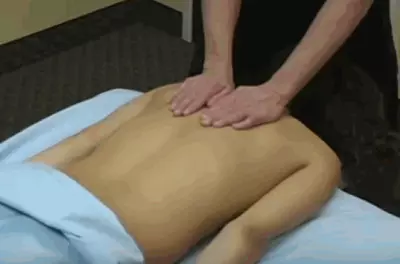
Gliding

Kneading
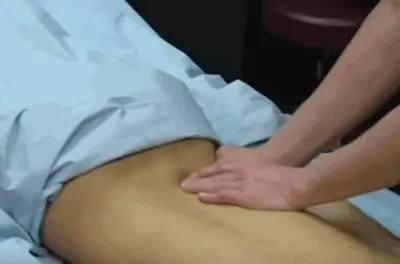
Friction
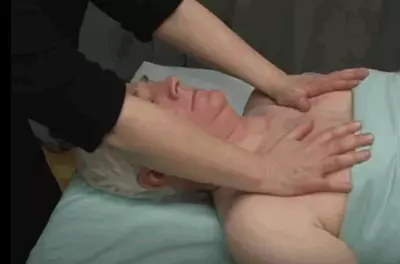
Holding
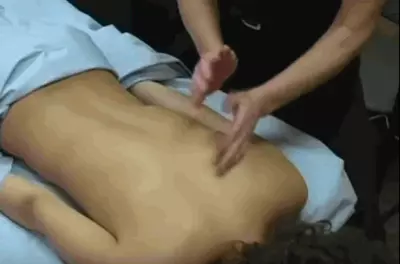
Percussion
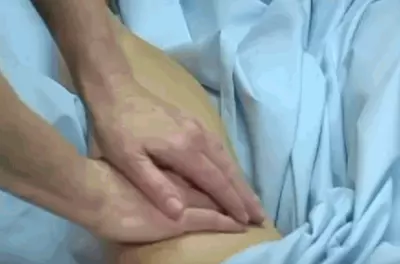
Pumping
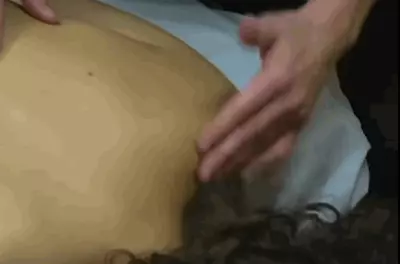
Vibration
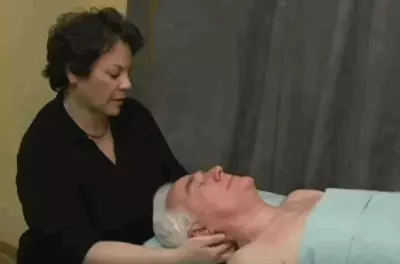
Direct pressure
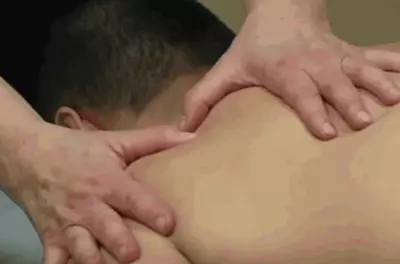
Cross-fiber friction
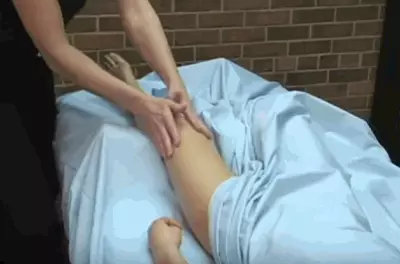
Rocking
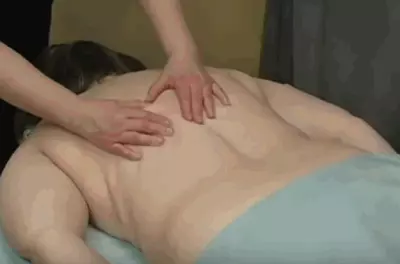
Skin rolling
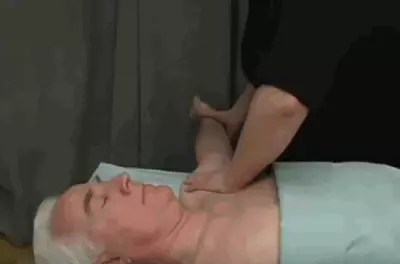
Stretching
Pictures of additional techniques
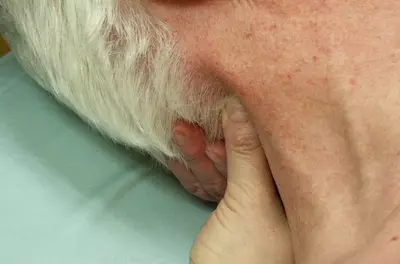
Compression

Traction
Answers to common questions during the massage
- Is it common to experience emotions? It depends. You might be having a day filled with emotions: sadness, joy or exhaustion. Sometimes the safe touch, music that brings up memories, dates that are linked to events, or the smell of the massage oil may release feelings. The body can react by crying, laughing, or "shivering from cold." The mind can also become absorbed in the feelings rather than the massage. Your therapist will simply ask if you are okay to continue receiving touch and given your answer, he or she will monitor how you are doing and adjust the session goals accordingly. For example, he or she may shorten the time, change the strokes or the music or add more draping.
- Is it okay to talk? Yes, it is okay to talk, but you may get more benefits from a relaxation massage if you let go of your everyday worries or concerns. If you are nervous about the process of receiving massage and need to talk to feel safe, your therapist will understand. They are trained not to talk about themselves during your session, but will simply answer your questions with a yes or no. If your session is rehabilitation-based, the therapist will need to stay in constant contact with you regarding pain levels and measuring relief. Because it's important that you offer specific feedback to the therapist, she may keep talking to keep you from drifting off.
- What if I am embarrassed about my body? Remember that massage therapists are professionals who are sensitive to possible client issues with touch and are non-judgmental about your body weight, amount of hair, skin conditions, scars, disabilities, medical conditions, or personal history of trauma.
After the massage
At the end of the massage, the therapist will leave the room so you can dress in private. Wait a few minutes on the table as you get grounded, especially if you feel light-headed. Then take your time getting ready.
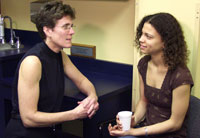 When you leave the treatment room and enter into the reception area, the therapist will offer you a glass of water. It is a good idea to drink some water to help the body flush waste products.
When you leave the treatment room and enter into the reception area, the therapist will offer you a glass of water. It is a good idea to drink some water to help the body flush waste products.
If possible, allow some quiet time after the massage and don't go back to work or other responsibilities immediately.
How you feel after the massage will vary based on the style of massage used, the length of the session, and the demands you place on your body afterward. Feelings range from being relaxed, renewed and centered, to invigorated, excited or experiencing a rush of clarity or new energy and insight, to recognizing your true level of fatigue (particularly if you can be "off duty" for the rest of the day) and wanting only to rest.
Clinical types of massage may leave the body free from chronic tightness or acute pain patterns, but may replace it with a mild soreness from the pressure applied. After this type of massage, you may want to rest the area before jumping back into the activity that produced the soreness.
Realize that the benefits of massage tend to be cumulative, so typically, you will feel better as you get additional massages.
Answers to common questions after the massage
- Can I go back to work after my massage? Of course, but plan on enough time to readjust. Be aware that your perception of motion (driving, stairs, distances may be "off" for 20 minutes or so after the session). Also, realize your relaxed state may bring your feelings close to the surface.
- Will the oil ruin my clothes or mess my hair? Most massage oils will not damage your clothing. If you have any concerns, bring a comfortable set of clothes to put on afterward. A well-trained therapist can design a session that does not mess up your hair or make-up.
- Should I tip the massage therapist? In spas and salons, it is generally considered proper protocol to tip the massage therapist, just as you would tip a hairdresser. But this is not always true in other environments, such as private practices or clinics where you don't tip the other professionals (such as a physical therapist).
Some therapists state on their literature that tipping is not necessary, but is gratefully appreciated, which leaves the decision up to you. The quality of the session should not be affected by whether you leave a tip or not, nor should you expect to get additional time or better service by tipping or giving gifts. It is nice to let the therapist know that you appreciate a good job, but tipping is not the only way, especially if the cost of the massage therapy is already a burden. Regardless of your decision, it is wise to be consistent, so that you don't tip one time and not the next and leave the therapist wondering if they did something wrong.
American Massage Therapy Association
Massage Therapy. (2004). Medline. Retrieved April 12, 2007 from
http://www.nlm.nih.gov/medlineplus/tutorials/massagetherapy
/htm/_yes_100_no_0.htm
Manipulative and Body-Based Practices: An Overview. (2007). Retrieved April 12, 2007 from http://nccam.nih.gov/health/backgrounds/manipulative.htm
Consumers' Guide to Therapeutic Massage & Bodywork. National Certification Board for Therapeutic Massage and Bodywork. Retrieved April 15, 2007 from: http://www.ncbtmb.org/consumers.php
